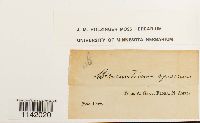
Consortium of Bryophyte Herbaria
- building a Consortium of Bryophytes and Lichens as keystones of cryptobiotic communities -
|
|
|
|
Family: Orthotrichaceae
micromitrium moss
[Ephemerum synoicum James, more] |
|
Powered by Symbiota.

























































































